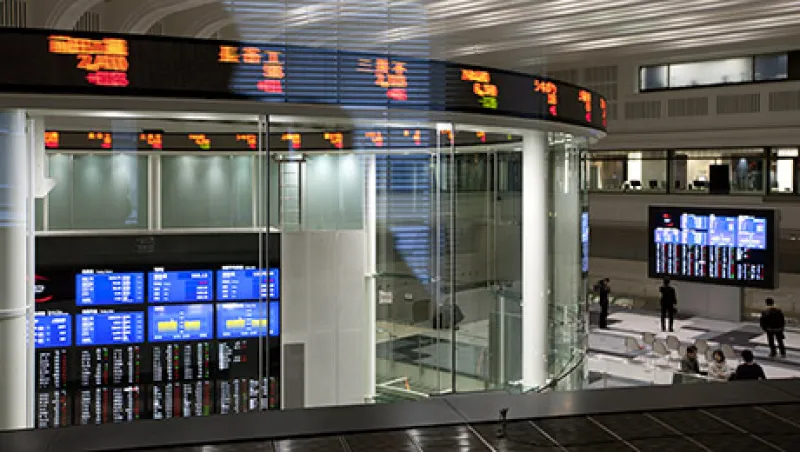Small-capitalization stocks have solidly outperformed large-cap stocks during the past five years. But experts have mixed views about whether that trend will continue. The Russell 2000 index of small-cap stocks generated an annualized total return of 26.1 percent during the five years through March 20, compared with 22 percent for the Standard & Poor’s 500 index.
What explains small-cap stocks’ superior returns during that period? The U.S. economic recovery has played a major role. “When you come out of a recession, typically small-cap stocks do well, as they are more levered to economic growth than large-cap stocks,” says David Chalupnik, head of mid- and large-cap growth equities at Nuveen Asset Management in Minneapolis.
As Paul Hickey, co-founder of Bespoke Investment Group in Harrison, New York, puts it, a small bump in gross domestic product “won’t necessarily move the needle” for a large-cap company. And compared with their large-cap counterparts, small-cap stocks are more sensitive to U.S. economic developments. The U.S. recovery has been stronger compared with that in other economic zones, such as many areas of Europe and some emerging markets, including China. Companies listed on the Russell 2000 garner only 16 percent of their sales outside the U.S., compared with 35 percent for companies in the S&P 500, according to Chalupnik.
Another reason for small-cap stocks’ strong run is investors’ renewed appetite for risk. The asset class, relative to large-cap stocks, historically has offered higher returns along with higher risk, as measured by volatility. “The return on a risky asset should be better when a light shines on the risk,” says Gregg Fisher, founder and chief investment officer of New York–based money management firm Gerstein Fisher. Small-cap stocks also have benefited from the fact that they outperform large-cap stocks during secular bull markets. Says Jeffrey Saut, chief investment strategist at Raymond James in St. Petersburg, Florida: “Small-cap stocks can grow faster. At a certain size, it’s difficult to grow 40 to 60 percent.”
To be sure, the five-year surge of small-cap stocks has pushed them to historically expensive levels, based on price-earnings ratios. As of March 18, the Russell 2000 traded at 23.2 times 2013 earnings and 19.6 times 2014 earnings estimates, says Chalupnik. The S&P 500 traded at 17.2 times 2013 earnings and 15.9 times 2014 earnings estimates.
That puts the Russell 2000’s P/E ratio at a 35 percent premium to the S&P 500 for 2013 earnings and at a 23 percent premium for 2014 earnings estimates. The usual premium is 10 to 20 percent, says Chalupnik. “That’s a negative story for small-cap stocks,” he adds.
Matt Kadnar, a portfolio manager at Grantham Mayo Van Otterloo & Co. in Boston, agrees. “Small-cap looks very expensive,” he says. “If there’s a bubble anywhere in the stock market, it’s in small-cap.” Based on P/E ratios, profit margins, growth and income, the Russell 2500 index of small- and midcap stocks is at its most expensive level since the early 1990s.
In the next seven years, Grantham Mayo forecasts that small-cap stocks will return negative 5.1 percent after inflation annually, compared with minus 1.6 percent for large-cap stocks.
“We think small-cap is poised to disappoint for the next five to ten years,” Kadnar says. Small-cap stocks may outperform large-cap stocks over very long-term horizons, he says. “But small-cap isn’t priced today to outperform. We don’t know if it will be this year or next, but over the longer term, small-cap has stiff headwinds.”
Chalupnik isn’t deterred from small-cap stocks by their lofty valuations, however. “The U.S. economy today is one of the best in the world,” he says. “The consumer is doing fairly well. We’re getting out of weather-induced weakness.” Chalupnik expects GDP growth of about 3 percent in 2014. That domestic economic strength should boost small-cap stocks further, he says. He has a bullish mid- to long-term outlook on the U.S. economy for macroeconomic reasons as well. The jump in U.S. oil and gas production is one example. “That helps our trade balance improve, creates jobs and lowers the cost of energy,” he says. “Also, our wages haven’t been growing fast, unlike places like China. Our manufacturing competitiveness has increased.”
Analysts predict 18 percent earnings growth for the Russell 2000 this year, compared with 9 percent for the S&P 500, Chalupnik says. Whereas 12 to 13 percent is probably more realistic for the Russell 2000, he says, “what really drives stock performance is fundamentals.”
“Fundamentals are superior for small-caps, even though they’re expensive. Until the fundamentals change, those stocks will probably continue to outperform.”







